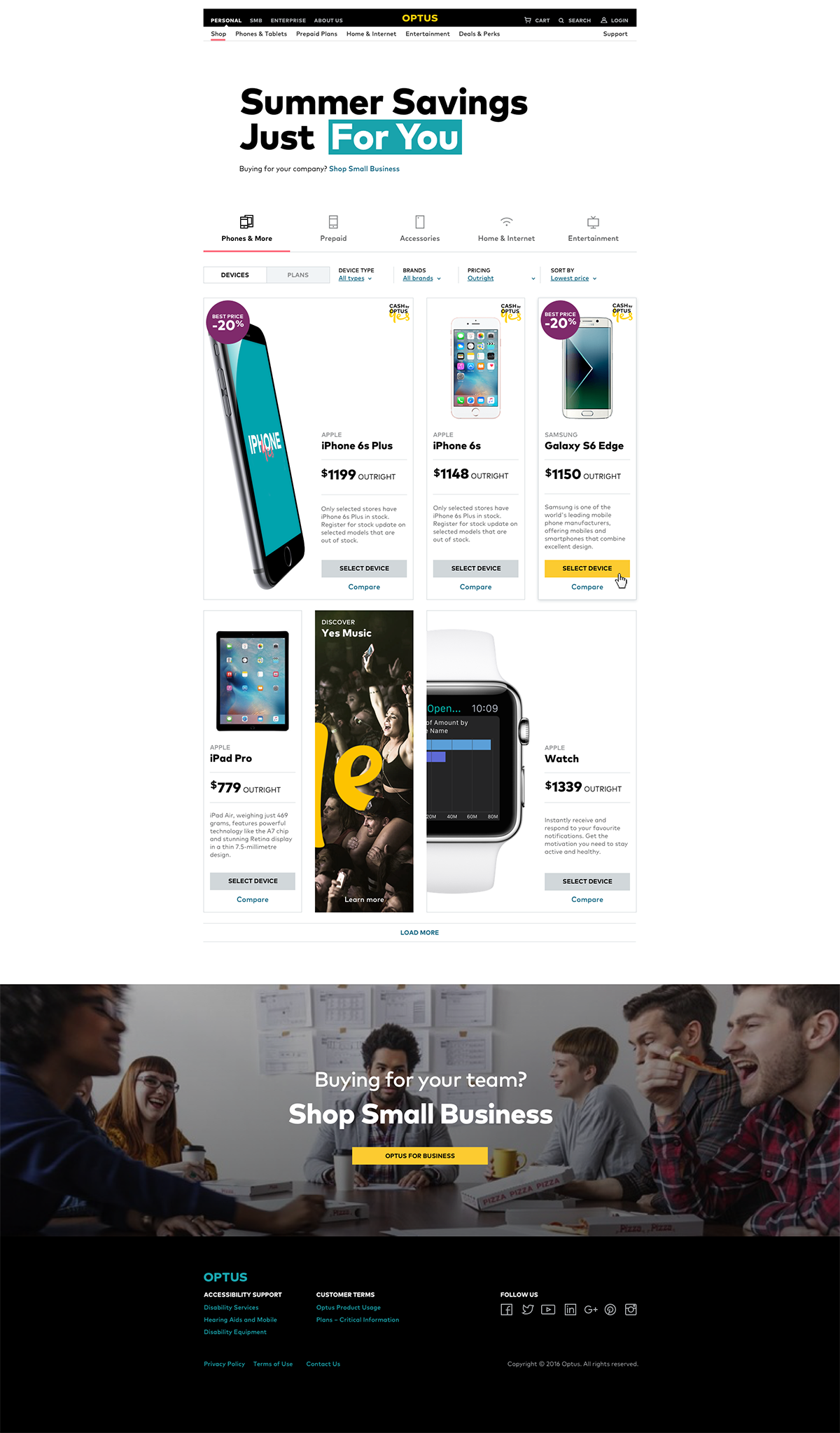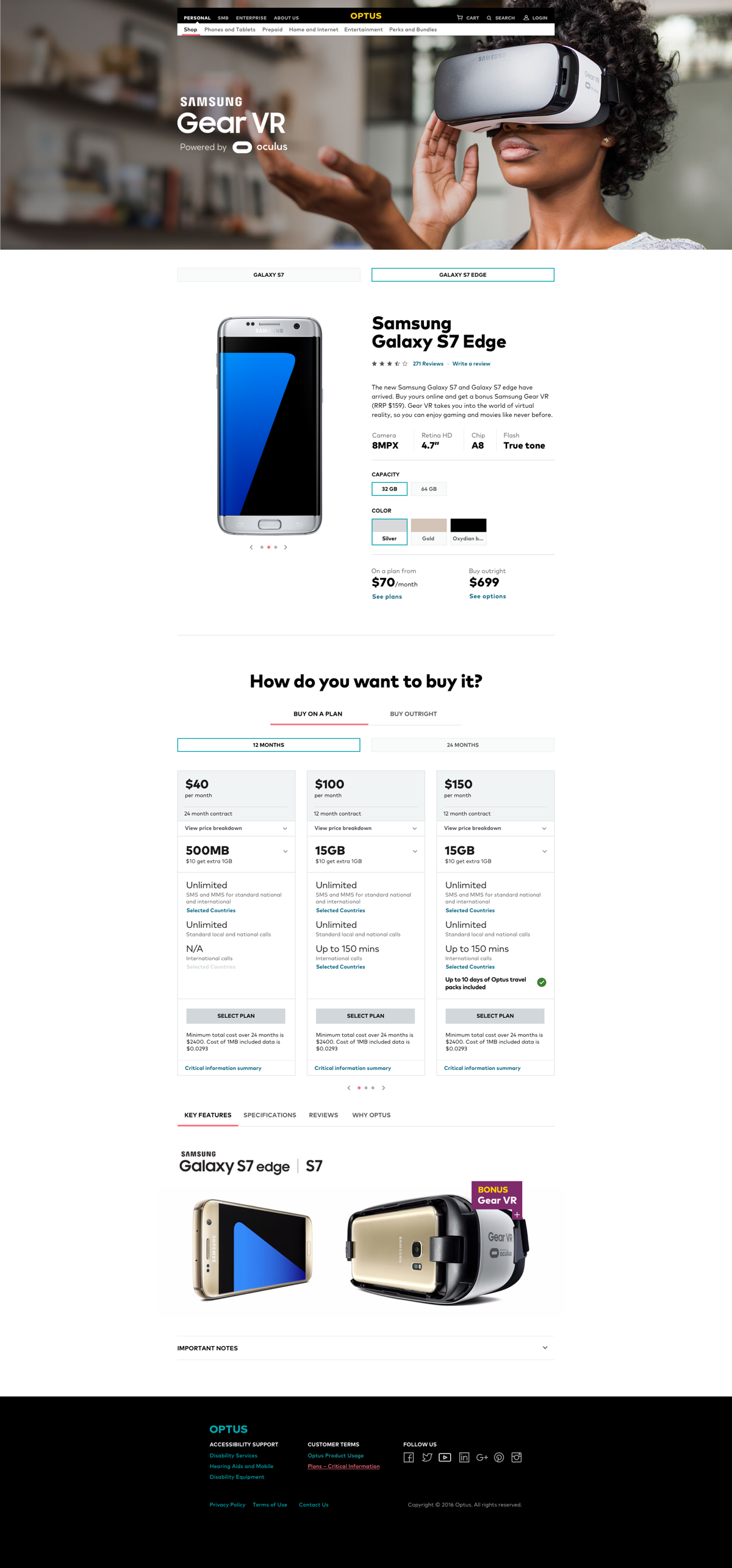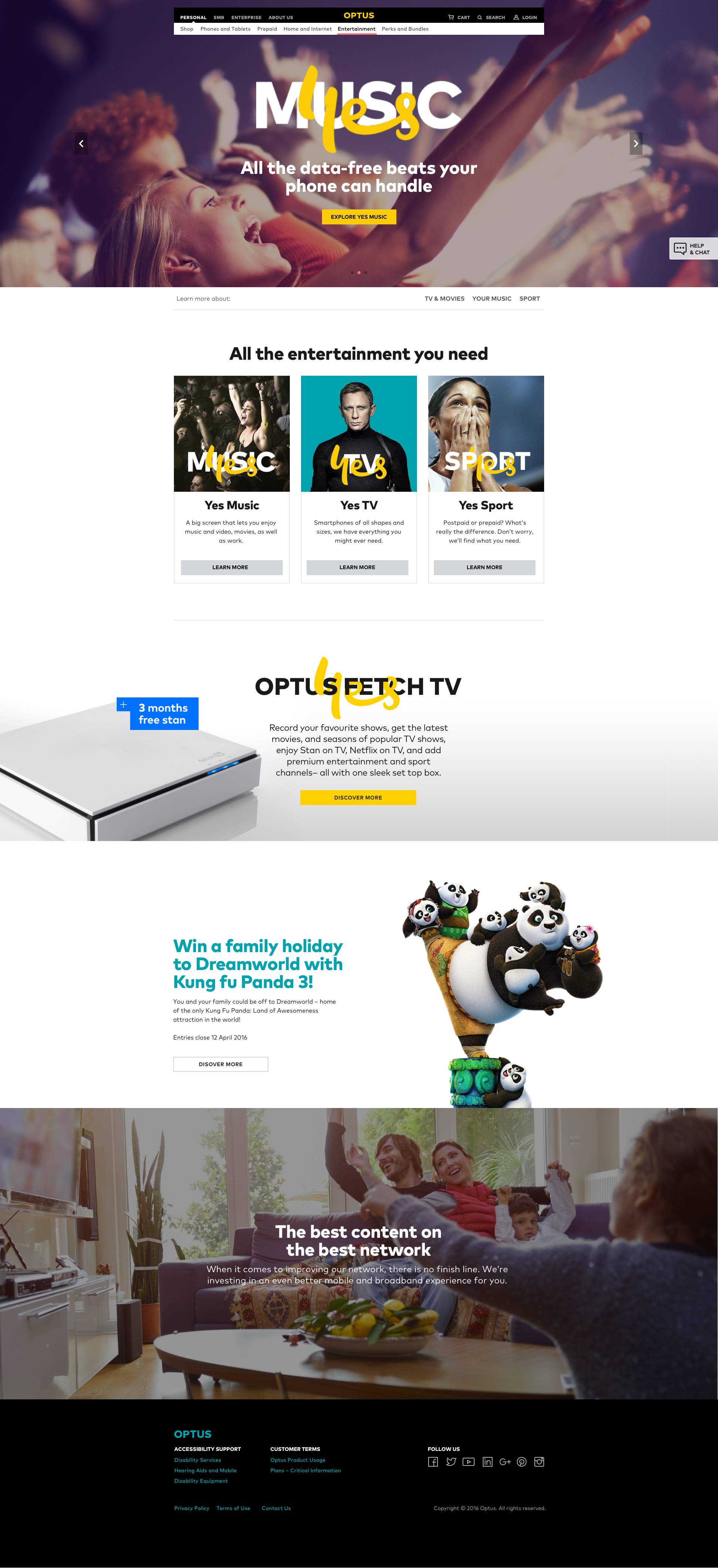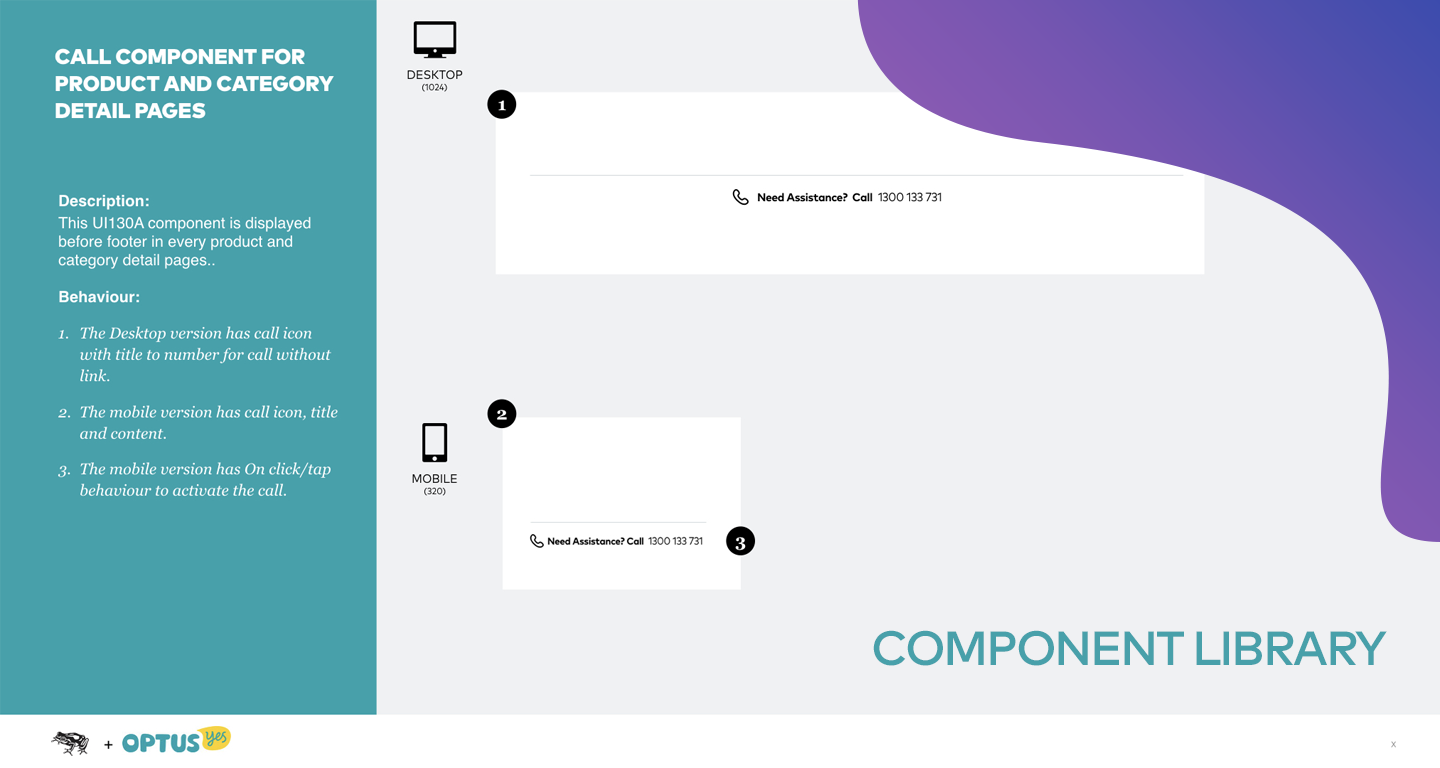

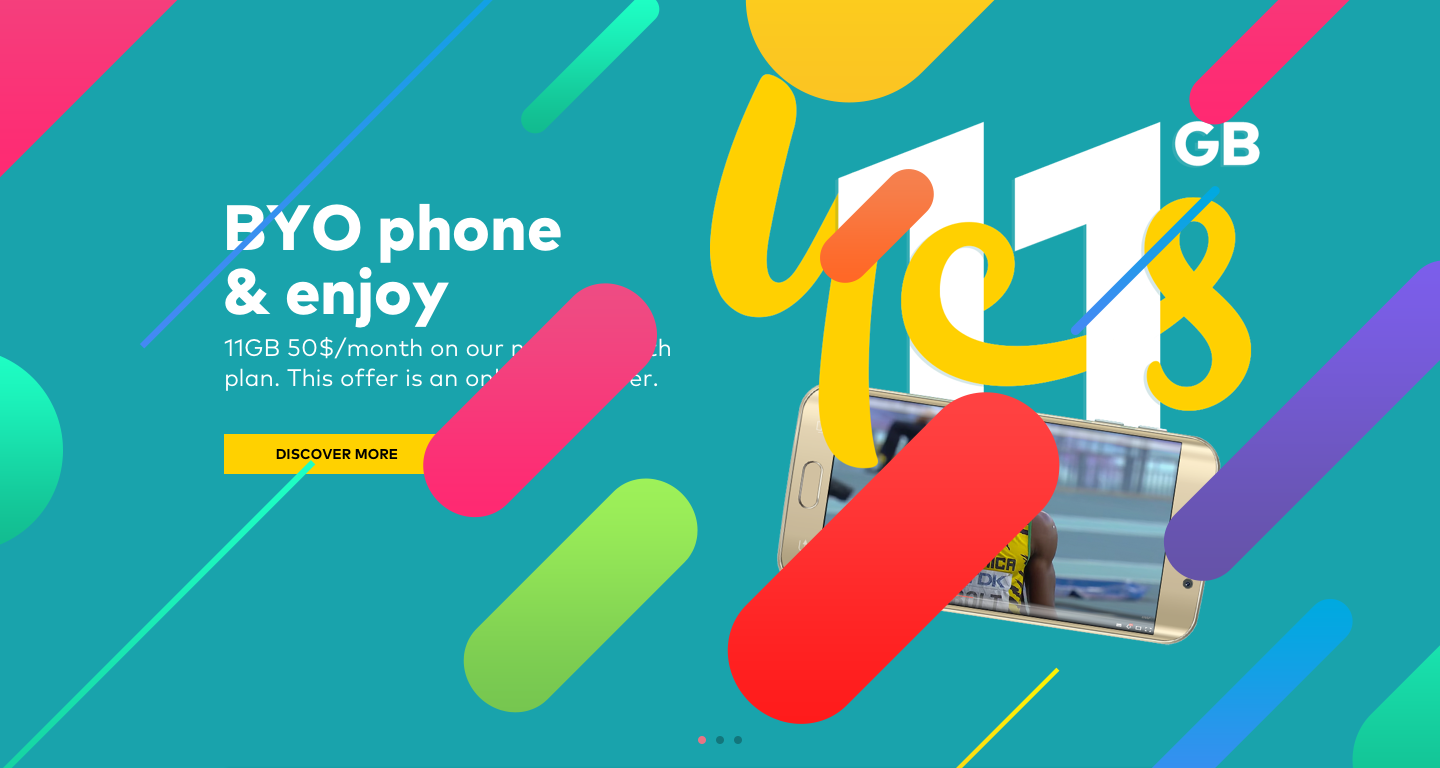

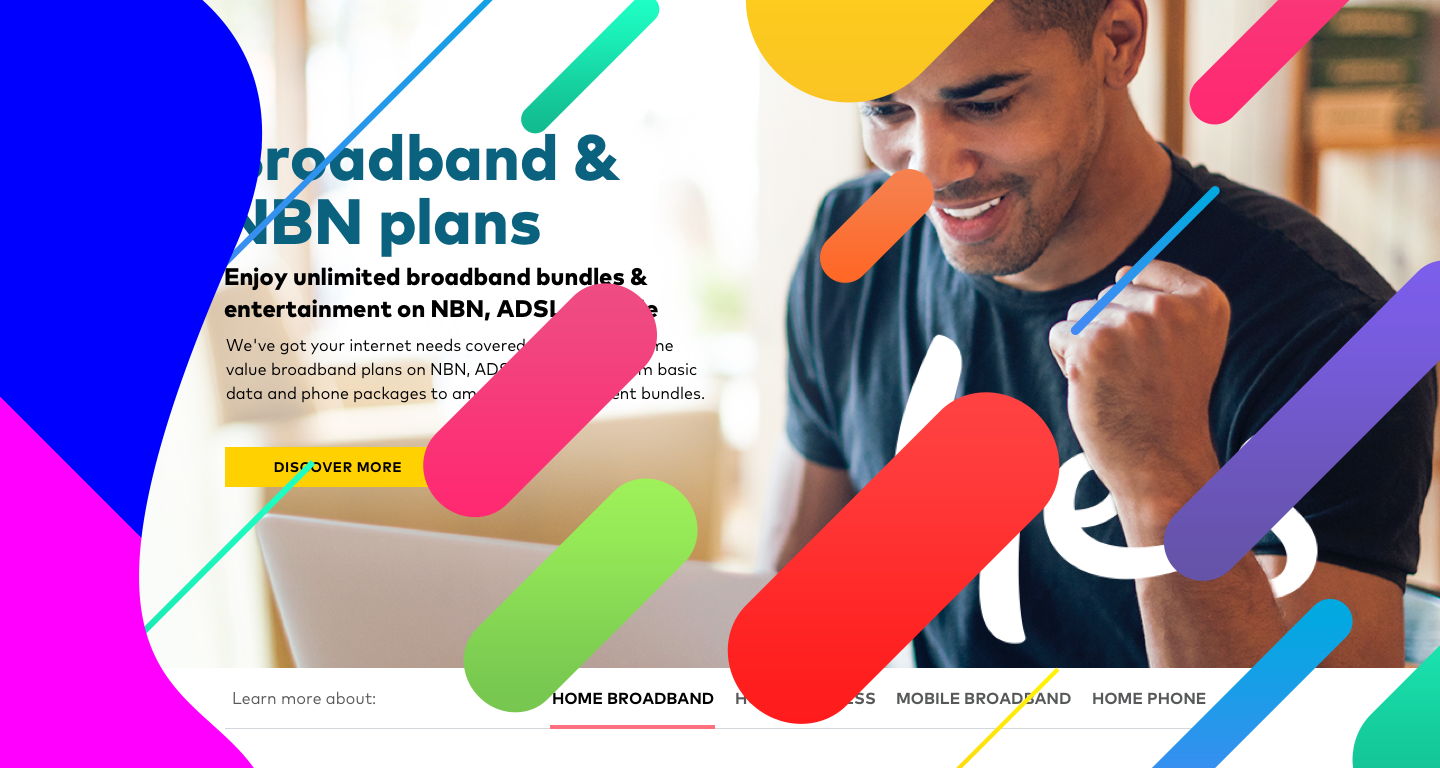





As Australia's second-largest telecommunications company, Optus has been a key player in providing mobile plans, broadband, and television services. In a highly competitive market, the company has consistently sought innovative ways to improve customer experience and strengthen retention.
Recognized for its extensive network coverage and forward-thinking service offerings, Optus launched the Spring Program in 2016 to focus on social innovation and scaling impact. A core component of this initiative was brand revitalization and digital experience enhancement for Optus customers.
One of the primary areas of improvement involved refining the user interface (UI) and user experience (UX) across Optus's digital platforms, including mobile apps and online portals. The goal was to create a more intuitive, user-friendly experience aligned with modern design trends, ensuring customers could seamlessly interact with Optus services.
Recognizing evolving industry trends and customer expectations, Optus embarked on a transformative project to revamp its digital shopping experience, focusing primarily on mobile plans and services. This initiative was not merely a digital transformation but a holistic reimagination of the customer journey, leveraging cutting-edge UX trends and technological advancements.
To achieve this, Optus partnered with Frog, a renowned global design firm known for its expertise in creating user-centric design solutions. This partnership was aimed at leveraging Frog's design acumen to build a digital experience that was not only aesthetically pleasing but also functionally superior, ensuring a smooth and engaging journey for customers exploring and purchasing mobile plans and services.
The key challenge was striking a balance between the complexity of telecom services and a user-friendly, seamless, and personalized multi-platform experience. Optus had to ensure that its customers could easily compare, customize, and purchase mobile plans and services while maintaining trust and transparency.
Optus conducted extensive research and analysis to refine its digital shopping experience. The approach included:
This comprehensive research framework provided Optus with a data-driven foundation to enhance its digital shopping journey, ensuring it aligned with customer expectations and market demands.
Optus collaborated with Frog to craft a design strategy aimed at enhancing its digital shopping experience, particularly for mobile plans and services. This collaboration started with a user-centered design approach, where they conducted in-depth user research to understand customer needs and preferences. Based on this research, they developed detailed personas and user journey maps, ensuring the design was finely tuned to user requirements.
At the core of this strategy was the simplification of the selection process. Optus organized mobile devices and plans into clear, intuitive categories, facilitating easy navigation for customers. They also implemented comparison tools that allowed customers to effortlessly compare different devices and plans side-by-side, aiding in informed decision-making.
Comprehensive product information was another critical element. Optus provided detailed descriptions of devices and postpaid plan features, benefits, and terms.
Customers could easily bundle devices with compatible postpaid plans, and there were options for real-time plan customization, allowing adjustments to data, call, and text allowances. The user interface was designed to be responsive and optimized for all devices, particularly mobile phones, with clear calls-to-action guiding customers through the selection and purchase process.
The team ensured that pricing, including any upfront costs, monthly fees, and contract terms, was clearly displayed. They also provided easy access to information on return policies, warranty details, and contract specifics.
The checkout process was streamlined for efficiency, with minimal steps and a variety of payment methods to cater to different customer preferences. Post-purchase support was also emphasized, with an easy activation process for postpaid plans and devices and accessible customer support through various channels.
Finally, Optus committed to continuous improvement through a feedback loop, collecting and analyzing customer feedback, and regularly conducting A/B testing to refine user interface elements and the overall shopping experience. This comprehensive and thoughtful approach ensured that the digital shopping journey for mobile devices and postpaid plans at Optus was not just a transaction but a satisfying and engaging experience for customers.
The "P" shopping experience concept appears to focus on streamlining the user journey from exploration to purchase, or enabling a direct shopping experience. Here's how it could be structured:
Explore to Shop:
Direct Shop:
Both paths designed to be intuitive, user-friendly, and efficient, enhancing the overall shopping experience in the "P" structure.
In the implementation phase of enhancing the digital shopping experience, we took meticulous steps to ensure the successful realization of their design strategy.
A critical component of this phase was the creation of Detailed Design Documentation (DDD). This documentation served as the blueprint for the project, encompassing comprehensive descriptions of all used components and their interactions, complete with annotations. It provided clear guidelines on how each component functioned within the ecosystem, ensuring consistency and coherence in the implementation process.
Simultaneously, the frog team developed a comprehensive style guide. This guide was pivotal in maintaining visual and functional consistency across the digital shopping platform. It outlined the design principles, typography, color schemes, iconography, and other visual elements, ensuring that every aspect of the user interface aligned with Optus's brand identity and the overall aesthetic vision.
The style guide became a reference point for both current and future development, ensuring that any additions or modifications to the platform remained consistent with the established design language.
The combination of Detailed Design Documentation and the style guide played a crucial role in the implementation phase. These documents not only provided a roadmap for developers and designers but also ensured that the end product was a true reflection of the initial design intent.
By adhering to these comprehensive guides, Optus was able to efficiently execute the design strategy, translating complex concepts into a user-friendly, engaging, and cohesive digital shopping experience for their customers.
Following the rollout, there was a noticeable increase in customer engagement and satisfaction, evidenced by longer session durations and positive feedback on the platform's ease of use and intuitive navigation.
The detailed design documentation and style guide ensured a consistent and appealing user interface, which translated into higher user retention rates and an increase in the conversion rate for mobile device and postpaid plan purchases.
The incorporation of interactive elements and clear, comprehensive product information resulted in a lower rate of cart abandonment and increased customer trust in the brand. Overall, these enhancements led to a more robust digital presence for Optus, solidifying its position as a customer-centric and innovative player in the telecommunications market.
Optus’s digital transformation was not just about technology—it was about enhancing the customer experience. Partnering with Frog, Optus redefined its digital shopping journey with:
he success of this initiative highlights how strategic design and technology integration can drive customer loyalty, engagement, and competitive advantage. Optus’s investment in UX/UI not only benefited its customers but also reinforced its standing as an innovative and customer-focused telecommunications provider.
By continuously evolving and responding to customer needs, Optus has set a new benchmark for digital shopping experiences in the telecom sector.

